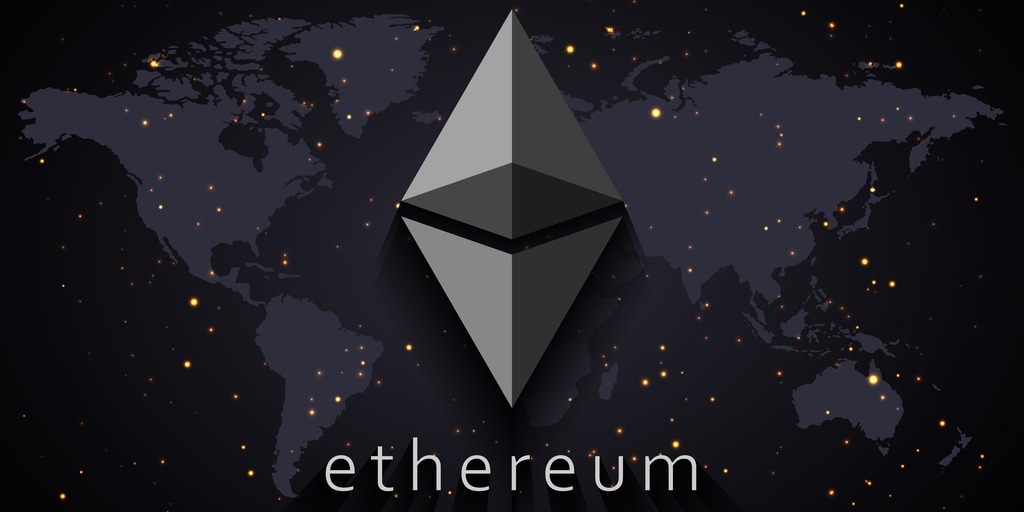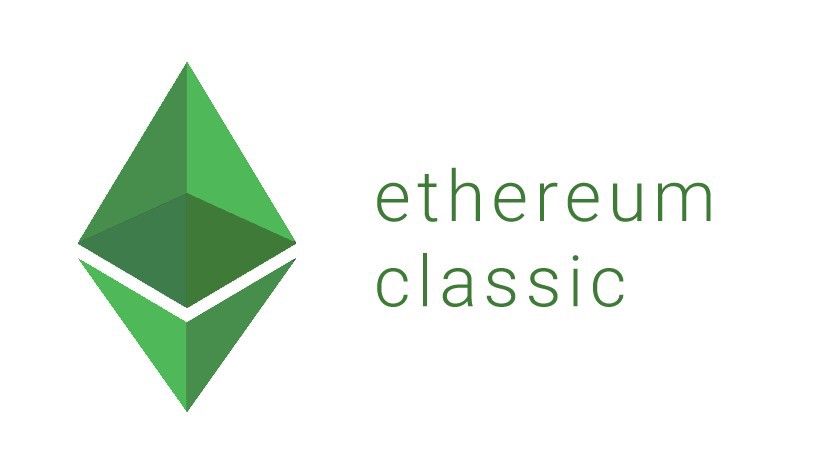Best Ways Ethereum Is Powering Decentralized Storage Solutions in 2024
In 2024, Ethereum continues to play a vital role in decentralized storage solutions, transforming how we manage and secure data. By leveraging blockchain technology, Ethereum empowers users to store their information in a way that is secure, private, and controlled by them. This article explores the various aspects of how Ethereum is enhancing decentralized storage, including its unique features, successful case studies, and future developments.
Key Takeaways
- Ethereum uses blockchain to provide secure and private data storage.
- Decentralized storage solutions give users full control over their data.
- Innovative projects like IPFS and Storj are leading the way in decentralized storage.
- Ethereum’s technology allows for cost-effective storage compared to traditional methods.
- Future upgrades aim to improve Ethereum’s scalability and efficiency.
Understanding Ethereum’s Role in Decentralized Storage
The Evolution of Decentralized Storage Solutions
Decentralized storage has come a long way. Initially, data was stored on centralized servers, which posed risks like data loss and hacking. Ethereum has changed the game by allowing data to be stored across a network of computers, making it safer and more reliable.
Ethereum’s Unique Capabilities
Ethereum stands out because it uses smart contracts to manage data storage. These contracts automatically execute actions when certain conditions are met, ensuring that data is handled securely and efficiently. Here are some key features:
- Decentralization: No single point of failure.
- Transparency: All transactions are visible on the blockchain.
- Security: Data is encrypted and protected from unauthorized access.
Key Players in the Ecosystem
Several projects are leveraging Ethereum for decentralized storage. Some of the most notable include:
- IPFS: A protocol for storing and sharing files.
- Storj: A cloud storage solution that uses Ethereum for transactions.
- Swarm: A distributed storage platform that integrates with Ethereum.
Decentralized storage solutions are not just about storing data; they are about empowering users and giving them control over their information.
In summary, Ethereum’s decentralized data storage solutions are a new frontier in technology, providing enhanced security and user control.
How Ethereum Enhances Data Security and Privacy
Blockchain’s Immutable Nature
One of the most significant features of Ethereum is its immutable blockchain. This means that once data is recorded, it cannot be changed or deleted. This characteristic ensures that all transactions are permanent and verifiable, making it extremely difficult for anyone to alter the data.
Cryptographic Security Measures
Ethereum employs advanced cryptographic techniques to secure data. Here are some key points:
- Encryption: Data is encrypted, ensuring that only authorized users can access it.
- Hashing: Each transaction is hashed, creating a unique identifier that adds an extra layer of security.
- Smart Contracts: These self-executing contracts automatically enforce rules, reducing the risk of human error.
User-Controlled Data Access
With Ethereum, users have complete control over their data. They can decide who can access their information and under what conditions. This is a shift from traditional systems where companies often control user data.
In a world where data breaches are common, Ethereum’s approach to security and privacy offers a promising alternative.
By leveraging these features, Ethereum not only enhances data security but also empowers users to take charge of their own information, making it a vital player in the realm of decentralized storage solutions.
Case Studies: Successful Implementations of Ethereum-Based Storage
IPFS and Ethereum Integration
The InterPlanetary File System (IPFS) is a revolutionary protocol that allows users to store and share files in a decentralized manner. By integrating with Ethereum, IPFS enhances its capabilities, allowing for secure and permanent storage of data. This combination ensures that files are not only accessible but also verifiable on the blockchain.
Storj: Decentralized Cloud Storage
Storj is another notable example of Ethereum’s impact on decentralized storage. It offers a cloud storage solution that is both cost-effective and secure. Users can rent out their unused hard drive space, creating a network of storage nodes. This model not only reduces costs but also increases data redundancy. Key features include:
- User-controlled encryption
- Pay-per-use pricing
- Fast data retrieval
Swarm: Distributed Data Storage
Swarm is designed to provide a decentralized storage solution that works seamlessly with Ethereum. It allows users to store data in a distributed manner, ensuring that no single point of failure exists. This is crucial for maintaining data integrity and availability. Some highlights of Swarm include:
- Incentivized storage through token rewards
- Robust data availability
- Integration with Ethereum smart contracts
Decentralized storage solutions like these are paving the way for a future where data is not only secure but also controlled by the users themselves, rather than centralized entities.
In summary, the integration of Ethereum with various decentralized storage solutions showcases its potential to transform how we manage and store data. These case studies illustrate the growing ecosystem of Ethereum-based storage solutions that prioritize security, efficiency, and user control.
The Economics of Ethereum for Decentralized Storage Solutions
Cost Efficiency Compared to Traditional Storage
Decentralized storage solutions using Ethereum can be more cost-effective than traditional storage methods. Here are some reasons why:
- Lower operational costs: By eliminating middlemen, users can save on fees.
- Scalability: As demand grows, decentralized systems can adapt without significant price hikes.
- Flexibility: Users can choose how much storage they need, paying only for what they use.
Tokenomics and Incentive Structures
Ethereum’s economic model is designed to encourage participation and investment. Key aspects include:
- Gas fees: Users pay for transactions, which helps maintain the network.
- Staking rewards: Participants can earn rewards by staking their Ether, promoting network security.
- Deflationary mechanisms: Recent upgrades have introduced burning transaction fees, potentially increasing Ether’s value over time.
Market Adoption and Growth
The adoption of Ethereum for decentralized storage is on the rise. Some indicators include:
- Increased user base: More individuals and businesses are utilizing Ethereum-based storage solutions.
- Partnerships: Collaborations with major tech companies are expanding Ethereum’s reach.
- Innovative projects: New applications are being developed, showcasing Ethereum’s versatility.
The future of decentralized storage on Ethereum looks promising, with ongoing developments aimed at enhancing efficiency and user experience.
Overall, Ethereum’s economic framework supports a sustainable and growing ecosystem for decentralized storage solutions, making it a viable alternative to traditional methods. This shift is crucial for the future of data management.
Future Developments in Ethereum’s Decentralized Storage
Upcoming Upgrades and Their Impact
Ethereum is on the brink of several exciting upgrades that will significantly enhance its capabilities. The upcoming EIP-4844 upgrade is expected to improve scalability, allowing for faster transactions and better performance. This upgrade will help Ethereum handle more data, making it a stronger choice for decentralized storage solutions.
Layer 2 Solutions for Scalability
Layer 2 solutions are crucial for Ethereum’s future. They help increase transaction speed and reduce costs. Some key solutions include:
- Plasma: A framework for building scalable applications.
- Rollups: These bundle multiple transactions into one, reducing congestion.
- State Channels: Allow users to transact off-chain, only settling on the main chain when necessary.
These solutions will make Ethereum more efficient and user-friendly.
Potential Challenges and Solutions
While Ethereum’s future looks bright, there are challenges to address:
- Network Congestion: As more users join, the network may slow down.
- Security Risks: New technologies can introduce vulnerabilities.
- User Adoption: Getting users to switch from traditional storage to decentralized options can be tough.
To tackle these issues, ongoing research and community support are essential.
Ethereum’s evolution is a journey, and with each upgrade, it moves closer to becoming the backbone of decentralized storage solutions.
In summary, Ethereum’s future developments promise to enhance its role in decentralized storage, making it a more viable option for users seeking secure and efficient data management.
Practical Applications of Ethereum in Decentralized Storage
Digital Identity Management
Decentralized storage solutions on Ethereum can help manage digital identities securely. Users can control their personal information without relying on centralized authorities. This ensures that their data is safe and only accessible to them. With Ethereum, individuals can own their identity.
Content Distribution Networks
Ethereum can be used to create decentralized content distribution networks (CDNs). This allows for faster and more reliable delivery of content. By using Ethereum, content can be stored across multiple nodes, reducing the risk of downtime. Here are some benefits:
- Increased speed of content delivery
- Reduced costs compared to traditional CDNs
- Enhanced security through decentralization
Secure Document Storage
Storing documents on Ethereum ensures that they are tamper-proof and easily accessible. Users can upload important files and manage access through smart contracts. This method provides:
- Immutable records that cannot be altered
- Controlled access for specific users
- Easy sharing without third-party interference
Decentralized storage on Ethereum not only enhances security but also empowers users to take control of their data.
In summary, Ethereum’s decentralized storage solutions are paving the way for innovative applications in digital identity, content distribution, and document management. As the technology evolves, we can expect even more practical uses to emerge, making data management more secure and efficient.
Community and Developer Contributions to Ethereum Storage Solutions
Open-Source Projects and Collaborations
The Ethereum community thrives on collaboration and open-source projects. Developers from around the world contribute to various initiatives, enhancing decentralized storage solutions. Some notable projects include:
- IPFS: A protocol for storing and sharing files in a distributed manner.
- Filecoin: A decentralized storage network that incentivizes users to rent out their unused storage.
- Arweave: A permanent storage solution that allows users to pay once for lifetime data storage.
Developer Tools and Resources
To support developers, Ethereum offers a range of tools and resources. These include:
- Truffle Suite: A development environment for Ethereum.
- Remix IDE: A web-based tool for writing and testing smart contracts.
- Infura: A service that provides access to the Ethereum network without needing to run a full node.
Community-Led Innovations
The Ethereum community is known for its innovative spirit. Many projects are driven by community needs, leading to:
- Hackathons: Events where developers create new solutions in a short time.
- Forums and Meetups: Spaces for sharing ideas and collaborating on projects.
- Grants and Funding: Support for promising projects that enhance the ecosystem.
The strength of Ethereum lies in its community. Together, they are shaping the future of decentralized storage solutions, making them more accessible and efficient for everyone.
In summary, the contributions from the community and developers are vital for the growth and success of Ethereum-based storage solutions. Their efforts ensure that the technology remains innovative and user-friendly, paving the way for a decentralized future.
Conclusion
In 2024, Ethereum is leading the way in decentralized storage solutions. Its unique technology allows users to store data securely without relying on traditional servers. By using blockchain, Ethereum ensures that data is safe and cannot be changed or deleted easily. This means that people have more control over their information. With many applications built on Ethereum, like games and finance tools, it’s clear that this platform is changing how we think about data storage. As more people learn about these benefits, the future looks bright for decentralized storage on Ethereum.
Frequently Asked Questions
What is Ethereum and how does it work?
Ethereum is a digital platform that allows people to create and run applications without needing a central authority. It uses blockchain technology to keep everything secure and transparent.
What are decentralized storage solutions?
Decentralized storage solutions let users store data across multiple locations instead of on a single server. This makes the data safer and more reliable.
How does Ethereum enhance data security?
Ethereum uses a system called blockchain, which keeps data safe from changes. It also uses special codes to protect information and gives users control over who can see their data.
What are some examples of Ethereum-based storage solutions?
Some examples include IPFS, Storj, and Swarm. These platforms allow users to store their data in a decentralized way.
Why is Ethereum popular for decentralized applications (dApps)?
Ethereum is popular because it allows developers to create a variety of applications easily. It has a large community and many tools to support new ideas.
What is the future of Ethereum in decentralized storage?
The future looks bright for Ethereum in decentralized storage, with ongoing upgrades and new technologies being developed to improve speed and efficiency.
Stay informed with daily updates from Blockchain Magazine on Google News. Click here to follow us and mark as favorite: [Blockchain Magazine on Google News].
Get Blockchain Insights In Inbox
Stay ahead of the curve with expert analysis and market updates.
latest from tech
Disclaimer: Any post shared by a third-party agency are sponsored and Blockchain Magazine has no views on any such posts. The views and opinions expressed in this post are those of the clients and do not necessarily reflect the official policy or position of Blockchain Magazine. The information provided in this post is for informational purposes only and should not be considered as financial, investment, or professional advice. Blockchain Magazine does not endorse or promote any specific products, services, or companies mentioned in this posts. Readers are encouraged to conduct their own research and consult with a qualified professional before making any financial decisions.

 Bitcoin
Bitcoin  Ethereum
Ethereum  Tether
Tether  XRP
XRP  Solana
Solana  Dogecoin
Dogecoin  USDC
USDC  Lido Staked Ether
Lido Staked Ether  Cardano
Cardano  TRON
TRON  Avalanche
Avalanche  Toncoin
Toncoin  Chainlink
Chainlink  Wrapped stETH
Wrapped stETH  Wrapped Bitcoin
Wrapped Bitcoin  Shiba Inu
Shiba Inu  Sui
Sui  Hedera
Hedera  Stellar
Stellar  Polkadot
Polkadot  WETH
WETH  Hyperliquid
Hyperliquid  Bitcoin Cash
Bitcoin Cash  LEO Token
LEO Token  Uniswap
Uniswap  Litecoin
Litecoin  Pepe
Pepe  Wrapped eETH
Wrapped eETH  NEAR Protocol
NEAR Protocol  Ethena USDe
Ethena USDe  USDS
USDS  Aave
Aave  Internet Computer
Internet Computer  Aptos
Aptos  Cronos
Cronos  POL (ex-MATIC)
POL (ex-MATIC)  Mantle
Mantle  Ethereum Classic
Ethereum Classic  Render
Render  WhiteBIT Coin
WhiteBIT Coin  Monero
Monero  Bittensor
Bittensor  MANTRA
MANTRA  Dai
Dai  Artificial Superintelligence Alliance
Artificial Superintelligence Alliance  Arbitrum
Arbitrum  Filecoin
Filecoin 



